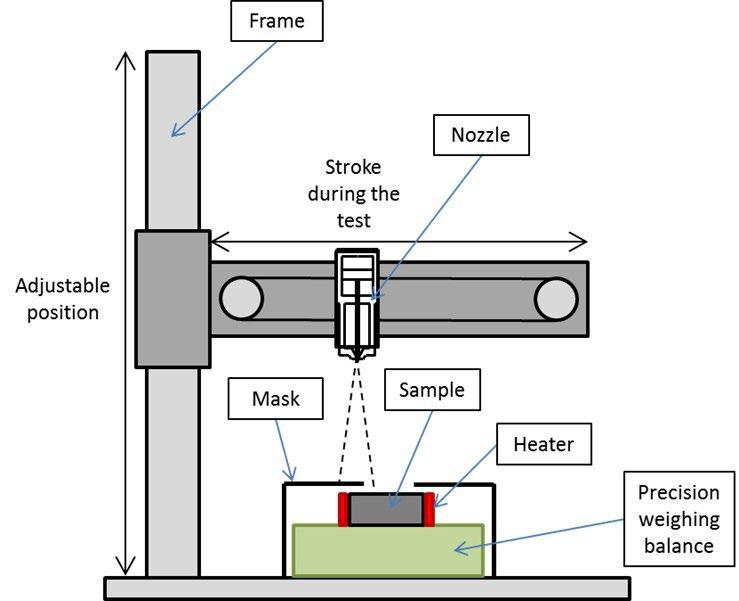
7 minute read
Design of graphitic lubrication processes for mandrels intended to produce seamless tubes
F. Arizzi, A. Tavasci
In the production of seamless pipes, hollows from steel billets are elongated through multi-stand mills using mandrels. During rolling, mandrels undergo severe thermo-mechanical working conditions which requires the application of lubricants, generally graphite-based. Next to the possibility of improving the performance in terms of inner surface quality, a proper lubrication process between mandrel and pipe allows to reduce the level of frictional stresses and to extend the life span of the tool, with better operational efficiency and reduction in costs due to failures.
Aiming to optimize the mandrel-pipe lubrication process, a test bench was developed in a lab environment to assess spray atomization features and final characteristics of the deposited graphite layer under controlled testing parameters (such as atomization geometries, pressure and deposition surface temperature). In parallel, lubricant rheological properties were characterized with the purpose of relating them to the specific application conditions and requirements. In the present work, a testing methodology was thus set-up at a laboratory scale, reproducing as much as possible the actual industrial process conditions occurring in lubricant application. The results of this activity allowed defining guidelines and criteria for both the choice of the most suitable product for the specific intended application and the target application conditions, depending on the specific hot rolling mill technology. According to the same guidelines and criteria, mandrel lubrication processes and circuits can be finally designed to ensure the optimization of the graphite layer features and to achieve the most of the lubrication effectiveness.
INTRODUCTION: HEADING
In lubricant formulation for hot rolling application, graphite is typically the main lubricant agent due to its lattice crystal structure (layers can easily slide over each other) and resistance to high temperatures [1].
For industrial application, graphite particles are often dispersed in water; however, even though they are intrinsically hydrophilic, graphitic surfaces adsorb hydrocarbon contaminants from the ambient, which renders them hydrophobic [2]. Therefore, graphite powder alone could neither be dispersed in water, nor remain in suspension. Moreover, graphite has a lack of polarity leading to poor adhesion to metal surfaces [3]. So, in order to use graphite as a lubricant in hot rolling process, it is necessary to mix the graphite powder with specific additives capable of improving the characteristics of wettability and adherence to metal surfaces. The types and the quantities of additives added to the
TenarisDalmine
mixture are responsible for the final rheological behavior, i.e. the viscosity of the product that is the fluid resistance to deformation at a given shear rate. The lubricant rheology behavior is of fundamental importance during Mixing step (to ensure the homogeneity of the mixture and the floating of the graphite particles), Spraying step (to ensure adequate atomization of the lubricating fluid) and Adhesion/Drying step (to ensure uniform coverage of the mandrel surface and adequate adhesion of the graphite layer on the mandrel surface). Basically, the lubricant must behave like a paint [4]. Spraying is the process through which the graphite is applied to the surface of a hot mandrel. A spray is a collection of droplets resulting by an atomization process which are moving in a controlled way [5]. A droplet is a small particle of liquid characterized by spherical shape due to the surface tension of the liquid itself. Achieving the desired level of atomization requires maintaining a balance of the fluid viscosity, surface tension and flow rate on one side with atomization energy on the other. Once the droplets of lubricant approach the surface to be lubricated, they must adhere properly and dry rapidly to form a uniform layer of graphite. For a solid lubricant, in order to provide an effective lubrication, it is essential that the adhesion layer have a greater binding strength than the shear strength of the lubricant itself [6]. Under a stable lubricant layer, friction coefficient stays flat and does not break during hot deformation process. Therefore, it is essential to define the proper spray configuration and surface temperature in such a way as to ensure the formation of a well-adhering and dry lubricating layer.
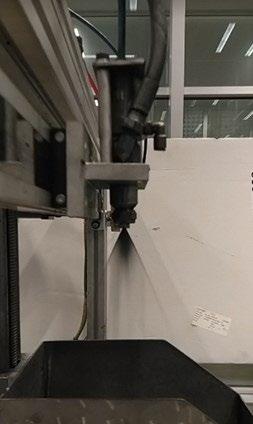
Experimental Procedures
In the present work, a testing methodology was set-up to reproduce in laboratory the actual industrial process conditions occurring in lubricant application. A test bench was indeed developed in a lab environment to assess spray atomization features and final characteristics of the deposited graphite layer under controlled testing parameters (such as atomization geometries, pressure and deposition surface temperature).
The device, with the proposed assembling of Fig.1, is composed by a high pressure pump for the lubricant (up to 100 bar), a frame for holding the spraying nozzle (with adjustable vertical distance from the tip of the nozzle to the deposition surface of the sample up to 400mm), a motorized device for the horizontal movement of the spraying nozzle along the frame during the lubricant application (linear speed up to 2m/s and constant for all spray time long), an electrical heating unit (to heat the deposition surface up to 160°C) and a precision weighing scale (to assess the lubricant drying time). The test is managed in fully automatic mode.
By means of this device, the drying time is assessed in real time by detecting the change in weight of the lubricated hot surface, placed on the precision scale.
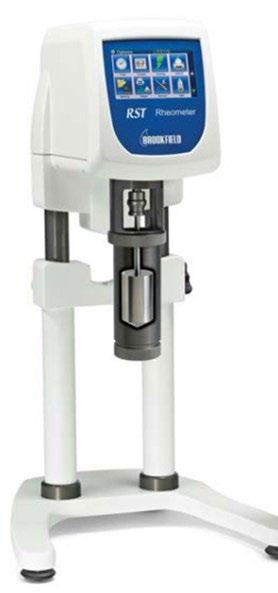
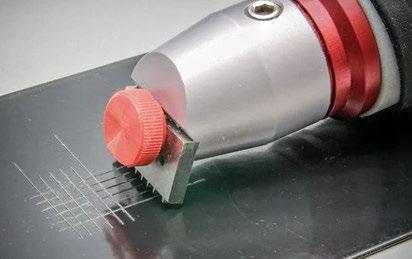
On the other hand, the graphite flowrate distribution with the jet angle is evaluated by assessing in a second step the applied quantity at various distances from the center of the spray jet (according to the most convenient method for collecting the fluid - see Fig.2 left side). Furthermore, at the end of the drying process the level of the adhesion between the graphite layer and the sample surface is qualitatively evaluated by cross-cut test (as shown in Fig.2 right side).
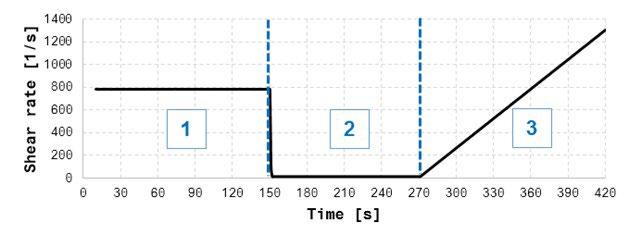
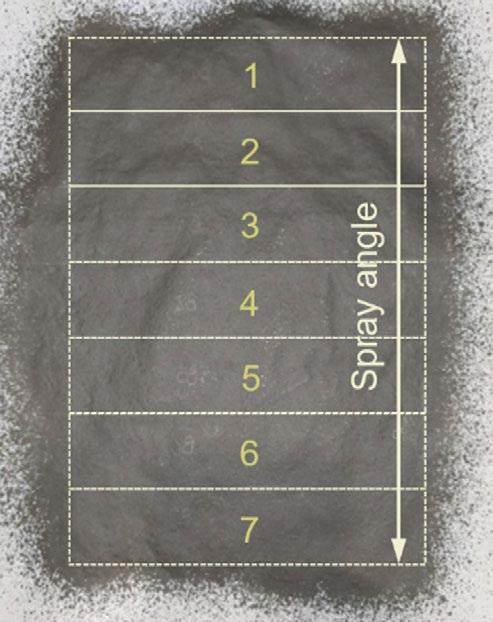
Fig.2 - Jet angle with applied quantity assessment (left) and outcome of a cross-cut test (right).
In parallel, lubricant rheological properties were characterized with the purpose of correlating them to the specific application conditions and to the results of the spray characterization. Being a graphite-based lubricant a non-Newtonian fluid, the important characteristics are the dynamic viscosity both at low shear rate (for mixture stability) and high shear rate (for adequate sprayability), as well as the thixotropy (response to a sudden change in the shear rate).
In our case, a Brookfield Rheometer RST with Coaxial Cylinder - Double Gap spindle was therefore used (see Fig.3) in place of a standard viscometer to correlate shear stress and shear rate.
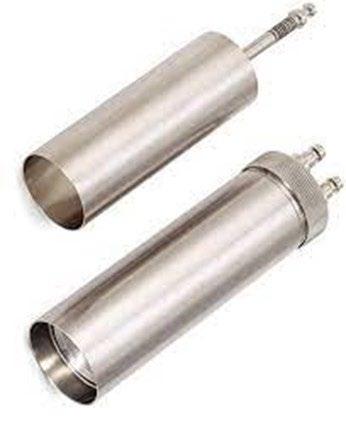
Fig.3 - Brookfield Rheometer RST with Coaxial Cylinder - Double Gap and testing conditions.
Specifically, lubricant dynamic viscosity was assessed superimposing three different steps of shear rate (SR), as shown in Fig. 3 (chart on the right side): a first one for initial fluid “adjustment”, a second one in order to evaluate the thixotropic recovery of the fluid and a third one to evaluate the shear thinning of the fluid.
Results And Discussion
Lubricant rheology
Dynamic viscosity for the products characterized was ranging in 400 ÷ 2000 cPs at SR 13 s-1, 40 ÷ 140 cPs at SR 1200 s-1 and 2 ÷ 20 s for its recovery from high SR to low SR.
Impact of the spraying pressure
For brand new nozzles under characterization, graphite flowrate distribution was at first evaluated: a “bell-shape” type is maintained in the investigated range (typical of the industrial field), see Fig.4. Total flowrate increases clearly with the working pressure.
Fig.4 - Graphite flowrate distribution at different pressure.
Impact of the nozzle wear
During operation, nozzles undergo important wear. For this reason, graphite flowrate distribution for brand new nozzles was compared to that of a nozzle whose orifice has increased about 8% in area (Fig.5).
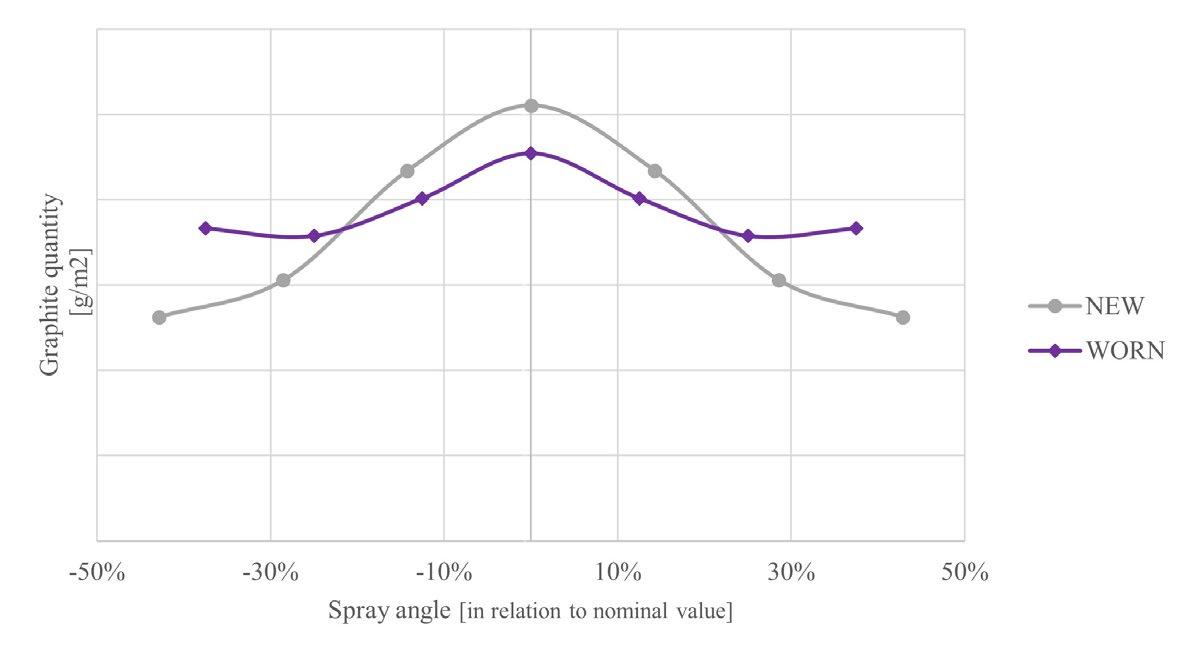
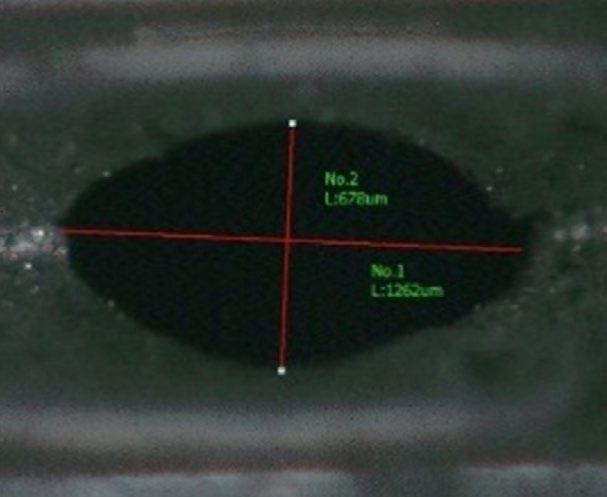
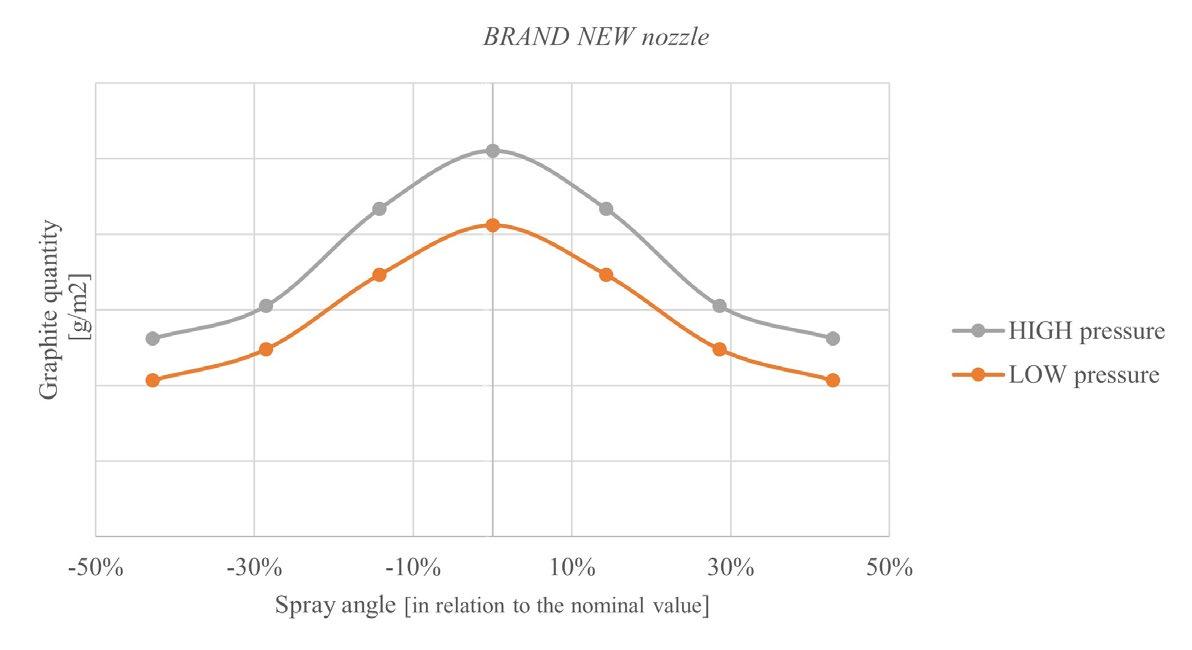
Fig.5 - New (left) and worn (right) nozzle orifice.
The wear of the nozzle not only reduces the spray angle more than the pressure does in the investigated range of working conditions, but also changes the graphite flowrate distribution by flattening it (see Fig.6).
Fig.6 - Comparison between the characteristics of the spray jet generated by a brand new and used nozzle.
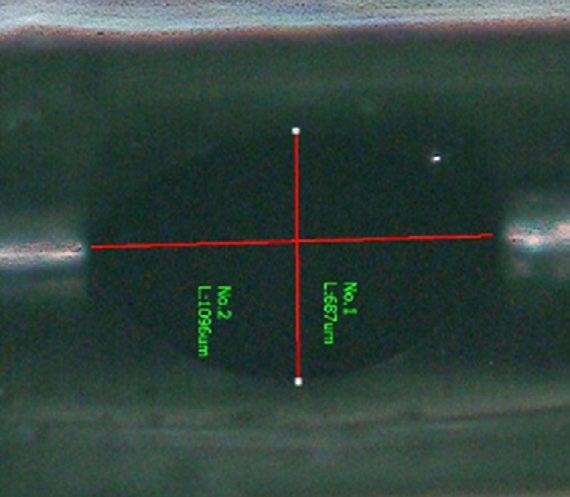
Impact of the application temperature
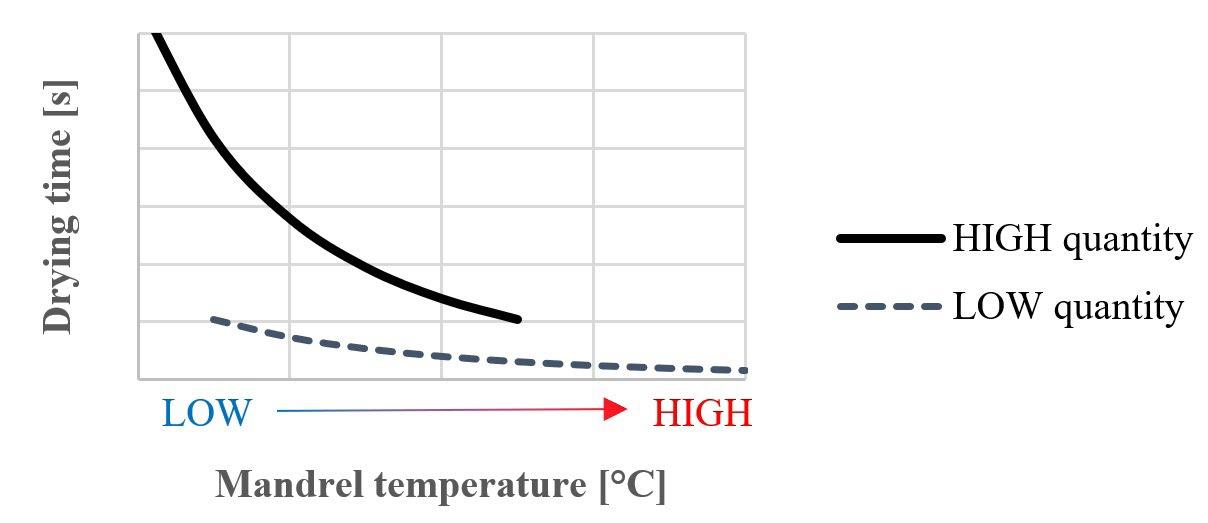
Drying times were assessed both at different application temperatures and at different deposited quantities, showing important variability especially in relation to mill operating conditions. The results are shown in the graph of Fig.7:
Fig.7 - Drying times for different application conditions.
Verification of the adhesion properties
The adhesion of the graphite layer to the metallic surface is qualitatively put in correlation with both the application temperature and the layer thickness itself through the cross-cut test.
Too high temperatures of the surface tend to cause boiling phenomena that hinder the adhesion of graphite, while too low temperatures excessively lengthen the drying times, leading to a poorly compact layer. Similarly, high quantities of graphite corresponding to thick layer increase the drying time and negatively affect the layer compactness. The scenario is even worse when high quantity is sprayed in combination with surface temperature too low. However, it is important to point out that each product behaves differently according to its formulation and to the application conditions.

In conclusion, the applied quantity and the application temperature, which can vary depending on the lubricant choice, must fall in a specific range of values. This let to combine the best of the lubrication effectiveness with the mill constraints of cycle time and mandrel handling.
Further Development
Aside from the graphite-based product choice and tailoring, the most effective lubrication process requires dedicated process control systems to ensure the lubricant application within established operative windows. Limits shall be defined according to simplified protocols of field assessment, which allow migrating laboratory results to the field.
Summary And Conclusions
In the present work, a lab methodology and testing protocol to characterize mandrel lubricant features with respect to spray application conditions was established. The main results can be thus summarized as follows:
• A test bench was set-up to replicate field application condition of graphite-based mandrel lubricants.
• Spraying nozzles and deposited graphite layer characteristics were characterized as a function of industrial application parameters.
• Rheological properties of the lubricants under analysis were on parallel assessed through a tailored testing protocol.
References
• Mandrel lubrication shall be optimized taking into account the mill characteristics.
Acknowledgements
This paper is published under permission of Antonio Caprera, Chief Industrial Officer of Tenaris, who is kindly acknowledged.
[1] Chung DDL. Review Graphite. Journal of Materials Science 2002;127:1465–1489. Available from: https://doi. org/10.1023/A:1014915307738
[2] Kozbial A.; Zhou F.; Li Z.; Liu H, Li L.: Are graphitic surfaces hydrophobic? ; Accounts of Chemical Research 2019; 49(12): 2765-2773. Available from: https://doi.org/10.1021/acs.accounts.6b00447
[3] Pierson HO. Handbook of Carbon, Graphite, Diamonds and Fullerenes - Properties, Processing and Applications; First edition. Amsterdam: Noyes Pubblication;1994.
[4] Kazuo T; Shizuo, M., Sumio, I.; Nippon Steel & Sumitomo Metal Corporation. Lubricant composition for seamless steel pipe working, European Patent EP 1 666 576 B1. 2005 Mar 17.
[5] Lefebvre AH, Mcdonell V. Atomization and Sprays; Second edition, Boca Raton: CRC Press; 2017.
[6] Iwama T, Morimoto Y. Die life and lubrication in warm forging. Journal of Materials Processing Technology 1997; 71: 43-48. Available from: https://doi.org/10.1016/S0924-0136(97)00141-6
TORNA ALL'INDICE >






